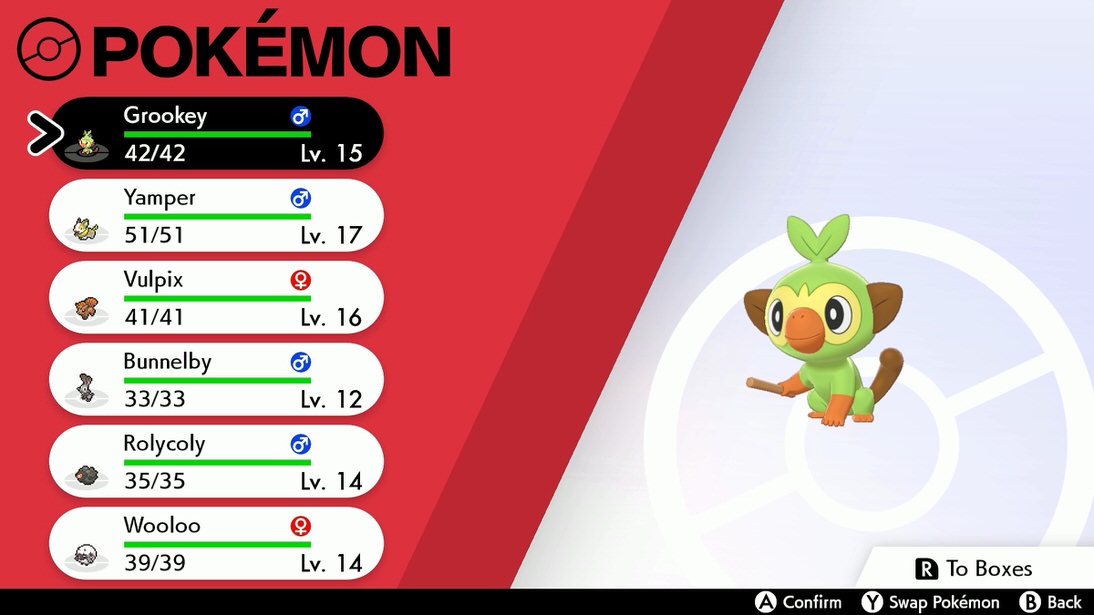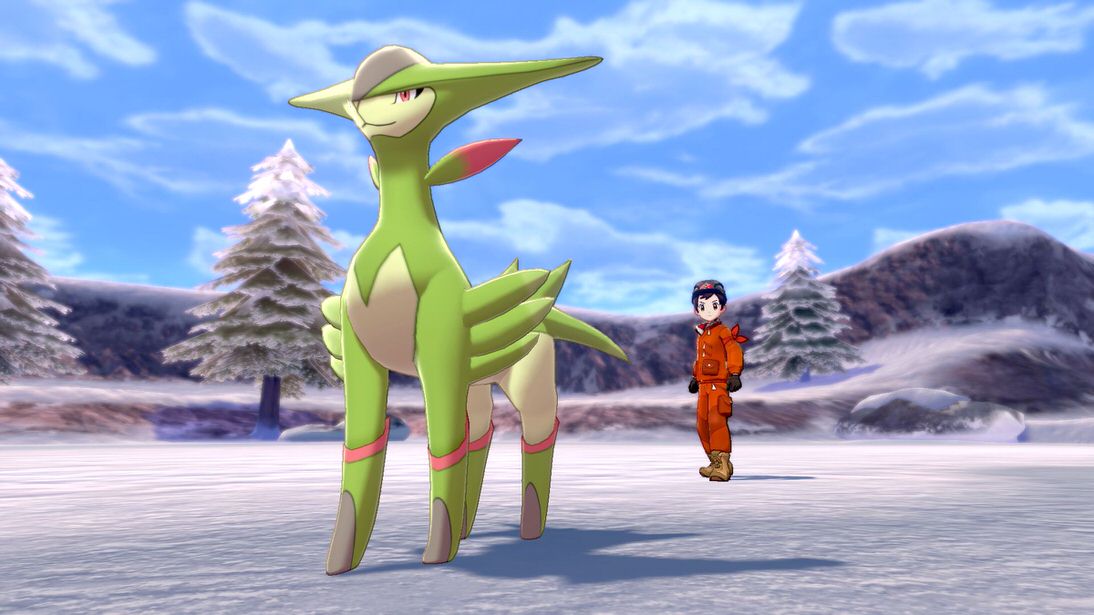Family Guide to Pokemon: Age Rating 7

Here's our parent and carer guide to Pokemon games. Everything you need to know about the game in one place. You can read our other guides for popular games.
Pokémon are role-playing games where you explore a fictional world and collect different creatures called Pokémon. You progress through the game by exploring the world, talking to characters and winning turn-based battles with the Pokémon you've collected.
The aim is to collect Pokémon gym badges and eventually become the region's Pokémon champion. You can level up your team of Pokémon by winning battles, and evolving them into different species. You can also trade Pokémon with friends and other players.
Most Pokémon games come in two variants (ie. Sword and Shield). Each version, although similar, is slightly different in what Pokémon it offers. If a friend has one version, you might consider getting the other so you can trade with each other and get all the Pokémon available over both versions. To trade with nearby friends, you do not need to be online, but for trades with other people across the world, you will need an internet connection and a Switch Online subscription.

The game gets gradually more difficult, and you need to learn which Pokémon do well against which kinds of enemies, and, at a high level, you'll need to know exactly what moves to use in battle and when. There is significant strategy and memorisation involved in playing, and the series has a prominent competitive scene. There are almost 900 different species of Pokémon to collect, and each set of games adds more, keeping the gameplay fresh.
Here's a list of all the Pokemon games:
- Pokémon Red and Pokémon Green (Feb 1996) Game Boy
- Pokémon Blue (Oct 1996) Game Boy
- Pokémon Yellow (Sept 1998) Game Boy
- Pokémon Gold and Pokémon Silver (Nov 1999) Game Boy Color
- Pokémon Crystal (Dec 2000) Game Boy Color
- Pokémon Ruby and Pokémon Sapphire (Nov 2002) Game Boy Advance
- Pokémon Fire Red and Pokémon Leaf Green (Jan 2004) Game Boy Advance
- Pokémon Emerald (Sept 2004) Game Boy Advance
- Pokémon Diamond and Pokémon Pearl (Sept 2006) DS
- Pokémon Platinum (Sept 2008) DS
- Pokémon Heart Gold and Pokémon Soul Silver (Sept 2009) DS
- Pokémon Black and Pokémon White (Sept 2010) DS
- Pokémon Black 2 and Pokémon White 2 (June 2012) DS
- Pokémon X and Pokémon Y (Oct 2013) 3DS
- Pokémon Omega Ruby and Pokémon Alpha Sapphire (Nov 2014) 3DS
- Pokémon Sun and Pokémon Moon (Nov 2016) 3DS
- Pokémon Ultra Sun and Pokémon Ultra Moon (Nov 2017) 3DS
- Pokémon Let's Go, Pikachu! and Pokémon Let's Go, Eevee! (Nov 2018) Switch
- Pokémon Sword and Pokémon Shield (Nov 2019) Switch
- Pokémon Brilliant Diamond & Shining Pearl (Nov 2021) Switch
- Pokémon Legends: Arceus (2022) Switch
Age Rating
Rated PEGI 7 for Violence. There is mild violence towards fantasy characters that lacks any apparent harm or injury. Battles see two Pokémon exchanging attacks, which results in the loss of health points but no visible injuries.

Pokemon Red/Yellow/Blue were rated PEGI 12 on 3DS for moving images that encourage the use of games of chance that are played as a traditional means of gambling. The player’s character places bets in a ‘slot’ machine. With each loss, the player is asked whether to “play again”. If yes is selected, a further number of bets can be placed followed by a number of losses until the player wins. The number of losses greatly outweighs the number of wins.
Skill Rating
Players from the age of around 8 usually have the required skill to enjoy this game. Older players also enjoy what is essentially a deep role-playing experience, particularly if they have played the different versions growing up.

Younger players enjoy the adventure and characters. As children get older they set about collecting and breeding Pokemon to collect them all. Discovering new tactics and strategies helps them develop tactical planning and lateral thinking.
Pokemon Snap is a spin-off game that has a lower age rating and is also easier to play for youngsters. It's rated PEGI 3, suitable for all ages.
Accessibility
Here are Accessibility notes for Pokemon. The games provide the option to change the text speed, turn the gyroscope on/off and includes an autosave feature.
The games also feature casual controls which enable you to play the game with only one side of the controller/with only one joy-con. Casual controls automatically remap the directional buttons (arrows) as the A, B, X and Y buttons and work for all aspects of the game. However, in this mode, you do lose access to the directional arrow buttons, though you can still complete the game in this mode.
Duration
This game will take between 40 hours and 17 hours to complete. You can progress through each area of the game quickly, but you might want to explore the different sections and encounter many of the wild Pokémon in each area depending on your play style, significantly increasing playtime.
Costs
Additional paid content is not common in Pokemon games. However, In Pokémon Sword and Shield, you can buy an expansion pack that allows you to travel to extra areas and catch different Pokémon.
Playing online in battles requires a subscription to Nintendo Online, as does trading Pokémon.
Alternatives
If you enjoy Pokemon and you'd like to find other games that appeal to fans of the series, here are some suggestions:
Alba A Wildlife Adventure (PEGI 3)
Pokemon Mystery Dungeon (PEGI 7)





